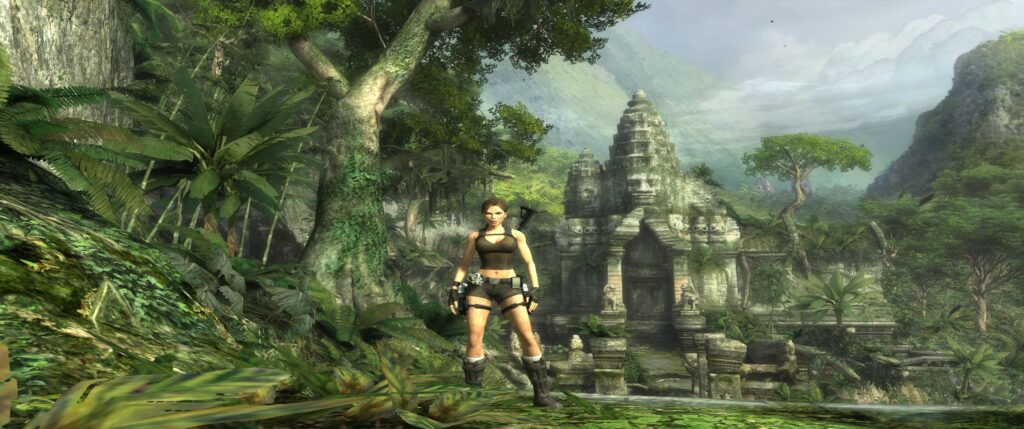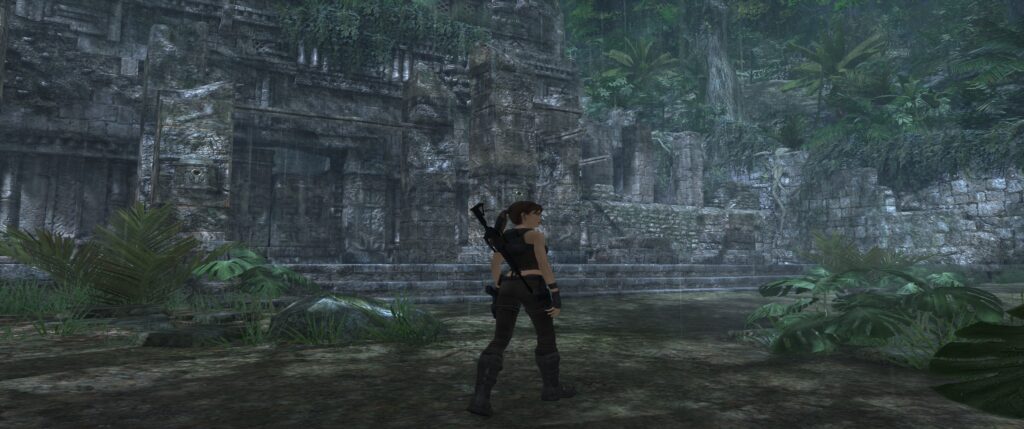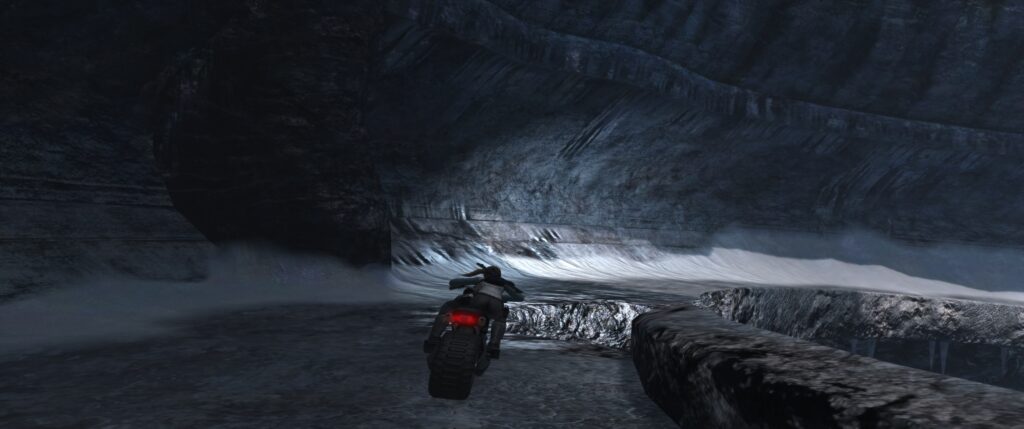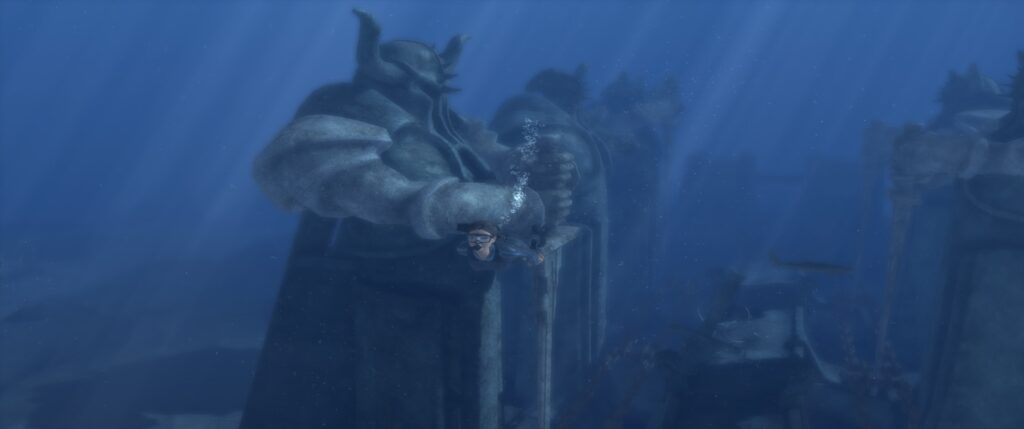After recently replaying Crystal Dynamic’s 2013 Tomb Raider reboot, I became interested in replaying the two original titles they developed after they replaced Core Design. The first game they developed was Tomb Raider: Legend which was developed on a completely new engine with a new story. This was a an enjoyable game at release but hasn’t aged so well. It still has its moments and by most accounts was a big improvement on Tomb Raider: Angel of Darkness which is the game that ended Core’s involvement with the series. They followed this up with a remake of the original game on the same engine that connected events of Legend but I did not replay this. The events of both games were used for the story in Tomb Raider: Underworld which was released in 2008.
Although the development duties for the franchise were transferred to Crystal Dynamics, the series creator Toby Gard was still involved for their first three entries. Underworld did not perform poorly financially or critically but it seems it still wasn’t the blockbuster the parent company Eidos Interactive were hoping for. Apart from the spin-0ff Lara Croft and the Guardian of Light, this was the last Tomb Raider game released before the 2013 reboot. So it was also effectively the last game in the series that played similar to the original games and involved the series creator.

I came away from my recent replay of Tomb Raider: Underworld with a much more favourable opinion than I had of the reboot.
It may be helpful to begin with my two biggest criticisms of the game because I believe these were both out of the developers control. The first is that much like Crystal Dynamic’s Legacy of Kain: Soul Reaver, the game was quite likely released incomplete. The game still has a a beginning and an end but it is easy to see that there was more planned and the November release on major platforms suggests the publisher wanted it out for Christmas sales and not because it was ready. The other criticism is that two story-based DLC packs were released exclusively for the Xbox 360 in 2009. They remain exclusive as of writing fifteen years later and while not necessary to enjoy the base game — do certainly complement it. Both of these criticisms are more the fault of the publisher than the developer.
What was immediately impressive was just how well the game ran almost sixteen years after release. I played the GOG version which usually does include some tweaks to get games working on modern machines but there are still plenty of titles I have trouble running including games that are much newer than this. This one installed and ran immediately and without any issue. It also supported the highest resolution on my monitor and the visual design still holds up beautifully. There is even a 4K Remastered FMV mod which makes the cutscenes mostly consistent with how the game runs in real-time. I originally played the game on Xbox 360 and remember being impressed by the environments at the time but did not expect it would hold up as well as it has all these years later.

An obvious criticism of the game is that it only has seven levels which sounds small but changes with experience. Most of these levels are wide in scope with multiple parts and varied environments. The trend towards open-world games was accelerating at the time of release and the developers obviously wanted to offer a number of large environments to explore. They mostly succeeded with every area being unique in its own way though some levels are certainly smaller. The size of each level is also taken advantage of gameplay wise with a number of clever puzzles that require traversing large areas to complete instead of being confined to a single room or confined area. The best example of this is in the Southern Mexico level where the entire area has to be traversed to solve the main puzzle. A motorbike makes traversing the area a lot of fun with jumps and traps adding variety to the gameplay. Working out where to begin with these puzzles can occasionally be confusing but it is mostly very rewarding and is certainly much more inventive than the simple tomb puzzles found in the 2013 reboot which only reward “experience” for the effort. In Underworld they are both necessary for progress as well as rewarding in their own right.
The more open design also contributes to the sense that you are exploring lost temples and civilisations. One simple way the game does this is by not having every part of the level relevant to progression. One might conclude that this means these areas are “empty” given the mandatory novelties present in modern sandbox design but less is more here. There are still treasures to find in each area which means that exploration is seldom fruitless for those that don’t enjoy exploration for its own sake. Despite how open the areas are, the road to progress is also usually telegraphed well — if not always explicitly. Lara’s PDA (smart phones were still new) also has optional tips voiced by Lara to point players in the right direction.

There are also a number of underwater areas in the game including the very first level after the tutorial. These include some underwater puzzles and the swimming mechanics are intuitive with Lara being able to glide smoothly and quickly through the water. Even today, areas set underwater are unpopular with with gamers but these were all genuinely engaging.
I have been high on praise so far but there are certainly legitimate areas for criticism. I found the combat mechanics dated and remember them being rough even at the time. Enemies are fought with a simple lock-on mechanic which is fine with one or two but quickly becomes irritating when large groups are attacking you. It was particularly annoying when fighting a tiger or larger creature that could knock Lara down over and over again before her recovery animation completed. As the game isn’t particularly difficult, this was easier to overlook. There are a few different weapons apart from her duel pistols and these weapons can be changed at the beginning of each stage.

Players familiar with the more forgiving traversal in Uncharted games as well as the mainline games that followed, might find the climbing mechanics frustrating. There are certainly moments when were Lara can and can not jump is not clear and even moments when she’ll get stuck in places she is not supposed to go but overall, it works well. Even after missing a jump and perishing, you’re never started far from where the climb began. There are still a few parts that will frustrate players for understandable reasons. This is hardly inconsistent with the series as it was though and it is a lot more rewarding than the obviously linear paths for traversal present in both Uncharted and the rebooted series that followed in 2013.
The mention of that series which was certainly influenced by Tomb Raider is also the main reason I believe the game design used Underworld was abandoned and the series rebooted. This game came a year after the Uncharted: Drake’s Fortune was released for PlayStation 3. This game was well-received but it was the 2009 sequel Uncharted 2: Among Thieves that really spelled the end for Tomb Raider as it was. I enjoyed these games but not so much that I think Tomb Raider needed to emulate them. Clearly this is what was felt with people making the decisions for Crystal Dynamics though as the reboot games borrow a whole lot more from Naughty Dog’s series than what is found in the original Tomb Raider.

Tomb Raider: Underworld is a great game that would have been even better if it had been given a bit more development time. The ideas present in this game could also have been expanded further and made for an even better sequel. Instead, we got three games with “Tomb Raider” in the title that borrowed from every game except the ones that made the series so beloved in the first place. With Crystal Dynamics now openly abandoning everything the series was, Underworld will quite likely remain the last Tomb Raider game. The good news is it can easily (and cheaply) be enjoyed today as can the original three games which were combined into a remaster this year.
